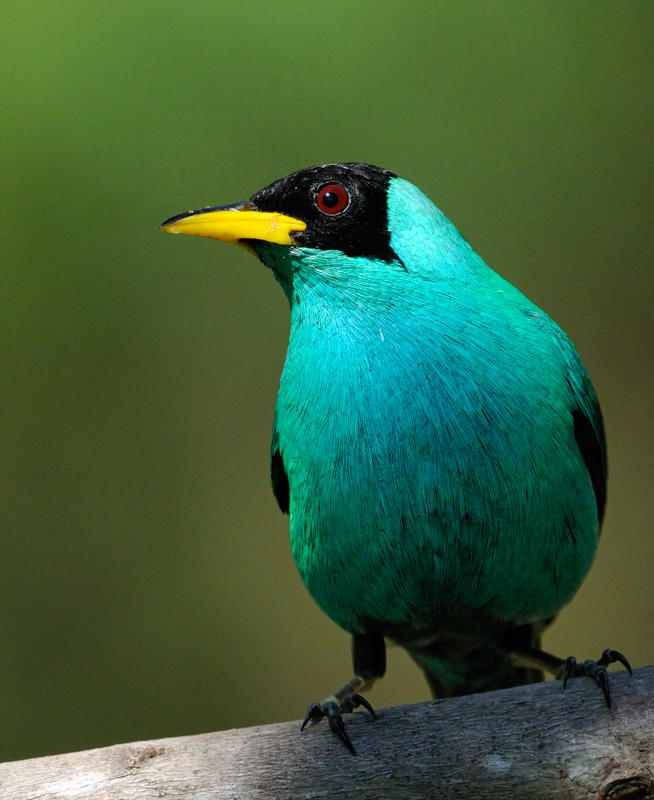
The shape and quality of the tail below is similar to that of the known ASY female above, suggesting that either there is minimal difference in appearance of rectrices by age in this species, or that the tail is (at least sometimes) fully replaced as part of a preformative moult in fall or winter. It appears there is also a moult limit between the unreplaced juvenile inner primaries that are brownish and frayed, and the new adult outer primaries that are darker and with bolder green edging.

Note the relatively brownish, narrow, and pointed primary coverts with minimal green edging, contrasting with the greater coverts (compare with the ASY female above). The overall plumage of this bird appears very similar to that of an ASY female the age in this case is presumed based on the appearance of the wing, but it is possible this bird is older than SY, as timing and extent of moult in this species has not been well documented. Of particular interest is that the innermost two primary coverts (and corresponding primaries) have turquoise edging, rather then green. Typically only males have turquoise feathers, but given the known age of this individual, it must almost certainly be a female the explanation for these feathers is unknown.īased on this individual being at least 3+ years old, this tail can be taken as typical of ASY Green Honeycreepers note that even the adult rectrices seem to have a rather loose structure (especially the central rectrices). Photo by Marcel Gahbauer, Las Caletas (CR),Īll wing feathers are broad and rounded, with distinct edging. Note the uniform lime-green plumage open wings usually need to be seen to determine age for this species. Incubation is done by the female and lasts for a period of 13 days.This female was banded in spring 2005, and therefore was at least 3+ years old when recaptured and photographed in April 2008. The female then lays 2 white eggs with brown blotches per clutch. See the distribution map at Birdlife International. The female Green Honeycreeper will build small cup shaped nests in trees. The Green Honeycreeper is found from southern Mexico to the Amazon Basin with a disjunct population in south east Brazil.

It resides in the canopy but will occasionally venture into clearings and the forest edge. It prefers forest and secondary woodland. The Green Honeycreeper ranges from southern Mexico to the Amazon Basin, with disjunct populations in southeastern Brazil and on the island of Trinidad. This honeycreeper will supplement its diet with some nectar and insects. This is unlike most other honeycreepers that rely heavily on nectar. This species' diet relies heavily on fruit.

Both the males and females have a distinctive curved yellowish bill with a black culmen, or upper ridge.

They have a straw colored belly and do not have black heads. The females have apple green plumage with darker wings. The males are mainly blue green with a black head and wing tips. Not common found in canopy of lowland rainforest and forest edge, often with mixed species flocks. The Green Honeycreeper is about 5.5 inches long and weighs approximately 17 g. Males are bright bluish-purple with black wings, mask, and throat females are mostly green with a blue whisker stripe, buffy throat, and white streaking on flanks. It is monotypic and the only species in its genus. This canopy dweller is found singly, in pairs, or in large mixed honeycreeper and tanager flocks. The Green Honeycreeper is a small tanager found from southern Mexico northern South America.


 0 kommentar(er)
0 kommentar(er)
